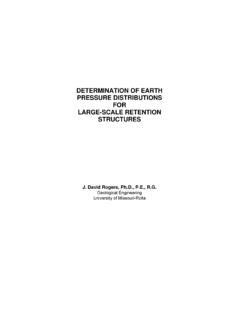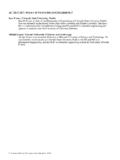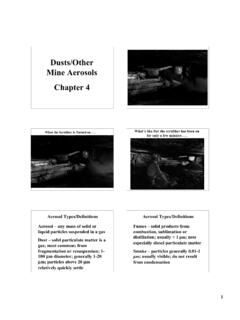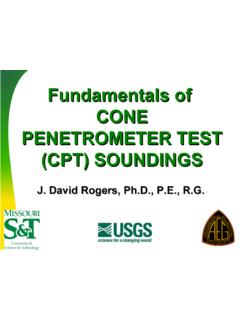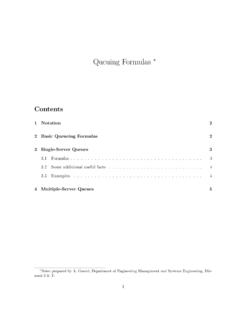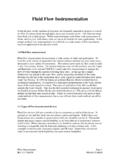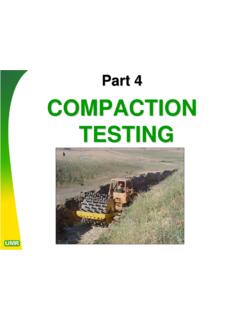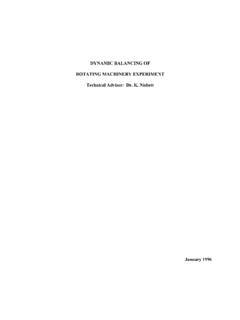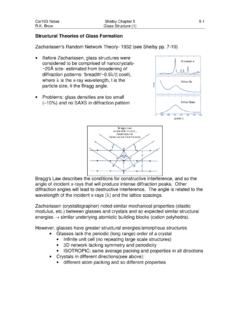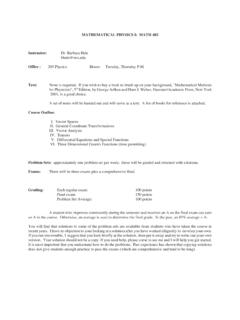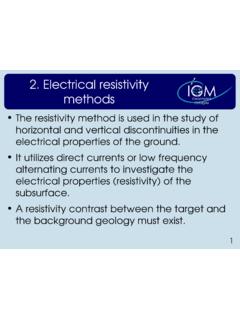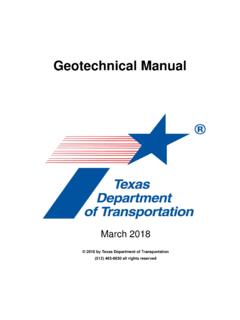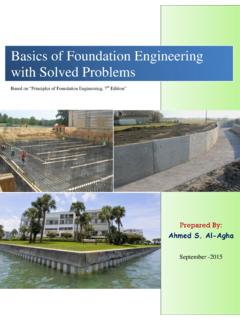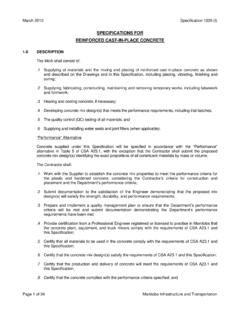Transcription of Soil Plasticity and Expansion Potential - Missouri S&T
1 GE 441 Advanced Engineering Geology & Geotechnics Spring 2004 Correlations Between Soil Plasticity and strength Parameters USDA-NRCS Soils Maps In the United States pedological information is contained in soil survey reports published by the Department of Agriculture (USDA). Around 1960, the SCS began publishing reports contain sections on engineering properties of the mapped soils with map scales of 1 inch to 2,000 feet (1:24,000), on aerial photograph mosaics (in black and white or gray-green). These second generation of reports also contain tabulations of test data and engineering classifications according to the American Association of State Highway Officials (AASHTO) and Unified Soil Classification System (USC) used by most consultants.
2 The SCS has published and updated these reports from 1960 through the present. In 1971 SCS issued their Guide for Interpreting Engineering Uses of Soils (USDA, Soil Conservation Service, Washington, , 86 p.), which lays forth the rationale by which engineering classifications of soil are tabulated in the individual County reports published by SCS. In 1995 Congress reorganized the Department of Agriculture. The SCS is now called the Natural Resources Conservation Service (NRCS), and within each County the NRCS office is now co-located with a Consolidated Farm Service Agency (formerly the Agricultural Stabilization and Conservation Service) office.
3 Many of the county soil survey reports contain soil Plasticity information gleaned from nearby highway projects. These documents are given free to the public at any of the local NRCS offices. A copy of the NRCS soil survey report should always be checked to see if any useful engineering data, such as soil Plasticity indices, are summarized and/or presented, to get a feel for the expected range in reported values. Soil surveys can provide a great deal of valuable geotechnical information in rural and agricultural areas. Atterberg Limits The Atterberg Limits (ASTM Test D-4318) define the ranges in moisture content that a soil will behave as a solid, plastic and liquid.
4 The Liquid Limit (LL) of a soil is defined as the moisture content above which the soil behaves as a liquid, and the Plastic Limit (PL) is the moisture content above which the soil behaves plastically. The numerical difference between the Liquid Limit and Plastic Limit is termed the Plasticity Index (PI). Example of How PI Correlates with Soil strength In the example case contained herein, we begin by summarizing published laboratory test results that were included in descriptions of the native soils on a hillside site in Santa Barbara, California. According to the Soil Survey (G. E. Shipman, 1981, Soil Survey of Santa Barbara County, California, South Coastal Part: Department of Agriculture, Soil Conservation Service and Forest Service, in Cooperation with University of California Agriculture Experiment Station, 144 p.)
5 , the native soils mantling the subject parcel are assigned to the Ayar Series, and have developed from the weathering of predominately soft calcareous shale and mudstone bedrock. These soils are generally described as dark grayish brown to very dark grayish brown clay, with a high shrink-swell Potential . Published laboratory test results indicate that the Liquid Limit (LL) of such soils is 50-70, and the Plasticity Index (PI) ranges from 25-45 Atterberg Limits tests were performed in our laboratory to help classify and evaluate the Expansion Potential and drained shear strength ( ) of the residual clayey soils mantling the slopes surrounding the site and estimate the residual shear strength ( r) of the landslide slip surfaces(s).
6 The residual shear strength is defined by the post-peak strength behavior of strain-softening materials, as sketched in Fig. 1. Residual shear strength is generally assumed to occur when brittle overconsolidated materials, such as shale bedrock, undergoes excessive shear, such as would be expected during landslippage along the basal rupture surface ( Skempton, 1970, First-Time Slides in Over-Consolidated Clays: Geotechnique, v. 20:3, pp320-24; and Trollope, 1973, Sequential Failure in Strain-Softening Soils: Proc. 8th Int l Conf. Soil Mechanics and Fdn Eng g, Moscow, v. 2, pt. 2, ). Naturally-occurring soils tend to exhibit strain-hardening while lithified materials, such as weak rock, exhibit strain softening, as compared in Fig.
7 1. Landslide slip surfaces are normally associated with residual friction values ( r). Fig. 1 presents the stress-strain behavior of two varying geologic materials involved in landslippage. The left diagram presents stress-strain behavior of a quasi-plastic, or strain-hardening material, such as normally consolidated clay. The right-hand plot shows the behavior exhibited by brittle materials, such as overconsolidated clay or bedrock, which tend to exhibit strain-softening behavior. A number of representative samples were evaluated for soil Plasticity on both this and the adjacent properties, presented herein as Figs.
8 2 and 3. These plots present the results of laboratory tests, determining representative values of the Liquid Limit (LL), Plastic Limit (PL) and Plasticity Index (PI = LL-PL). Figure 2 Atterberg Limits test data for soil samples recovered from exploratory borings on the subject parcel, a few hundred feet uphill of the Old Earth and Debris Flow Fan. Sample B3 came from a deep-seated slump-earthflow landslide. Figure 3 Atterberg Limits test data for soil samples recovered from exploratory trenches on the subject parcel, a few hundred feet uphill of the Old Earth and Debris Flow Fan. These samples were representative of residual soils developed on the Rincon Shale.
9 Soils taken from the upper two feet of the Monterey Shale exhibited PIs that averaged about 18 (medium Expansion Potential ). Soils developed in the upper two feet near the tuffaceous facies of the Monterey shale exhibited Plasticity Indexes (PI s) averaging 25 (highly expansive). Near-surface samples of soils developed on the colluvium mantling the hillslopes showed PIs of around 27 (highly expansive). Samples of landslide debris taken from the headscarp areas of several of the mapped earthflows exhibited PIs that ranged as high as 45 (very high Expansion Potential ). The range of these values seems appropriate to the observed conditions, which range from reasonably stable slopes to large deep-seated landslides.
10 Soil Residual strength Parameters The PI of a soil is commonly correlated with the expansive Potential and residual angle of internal friction for drained field conditions, as proposed by Gibson, 1953, Experimental determination of true cohesion and true angle of internal friction in clays: Proceedings of the 3rd International Conference on Soil Mechanics and Foundation Engineering (Zurich), v. 1:126; T. C. Kenney, 1959, Discussion: Journal of the Soil Mechanics and Foundation Engineering Division, ASCE, :SM3, p. 67-79; Kenney, 1967, The influence of mineral composition on the residual strength of natural soils: Proc.
